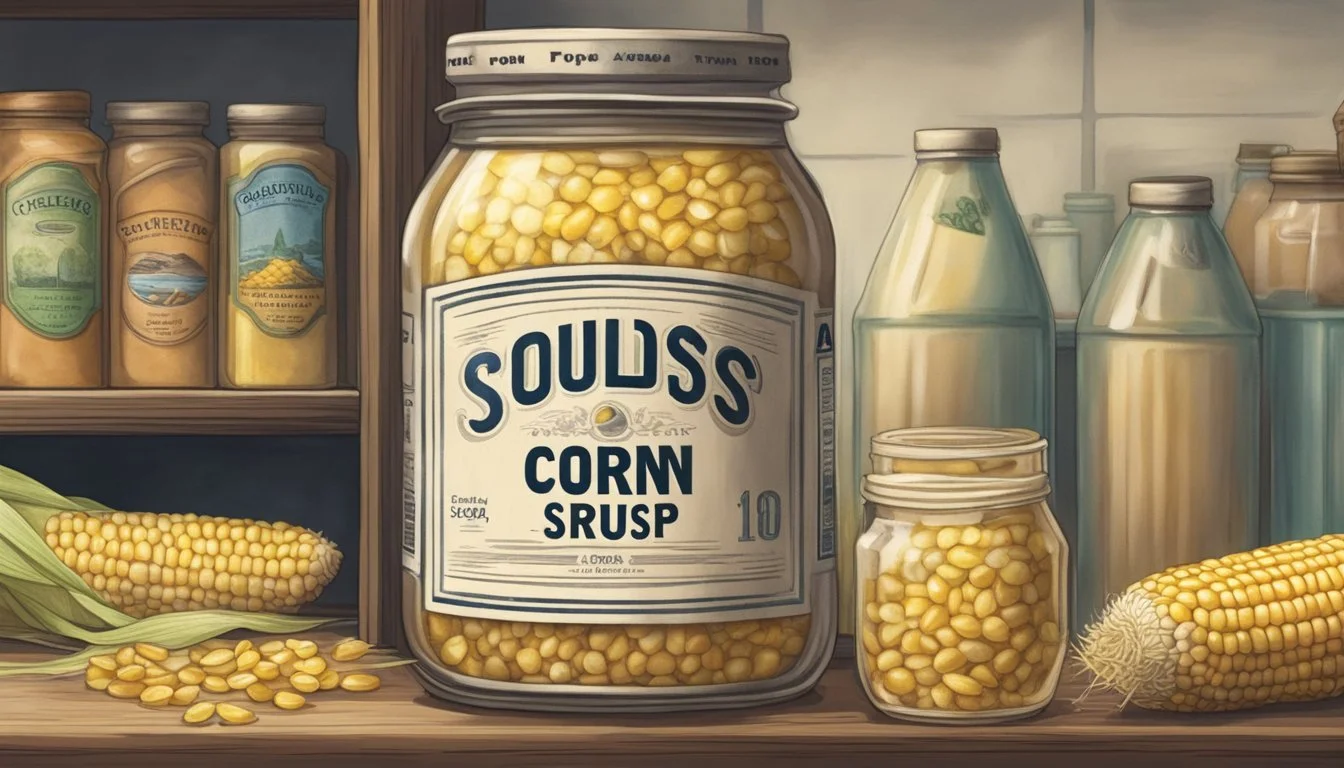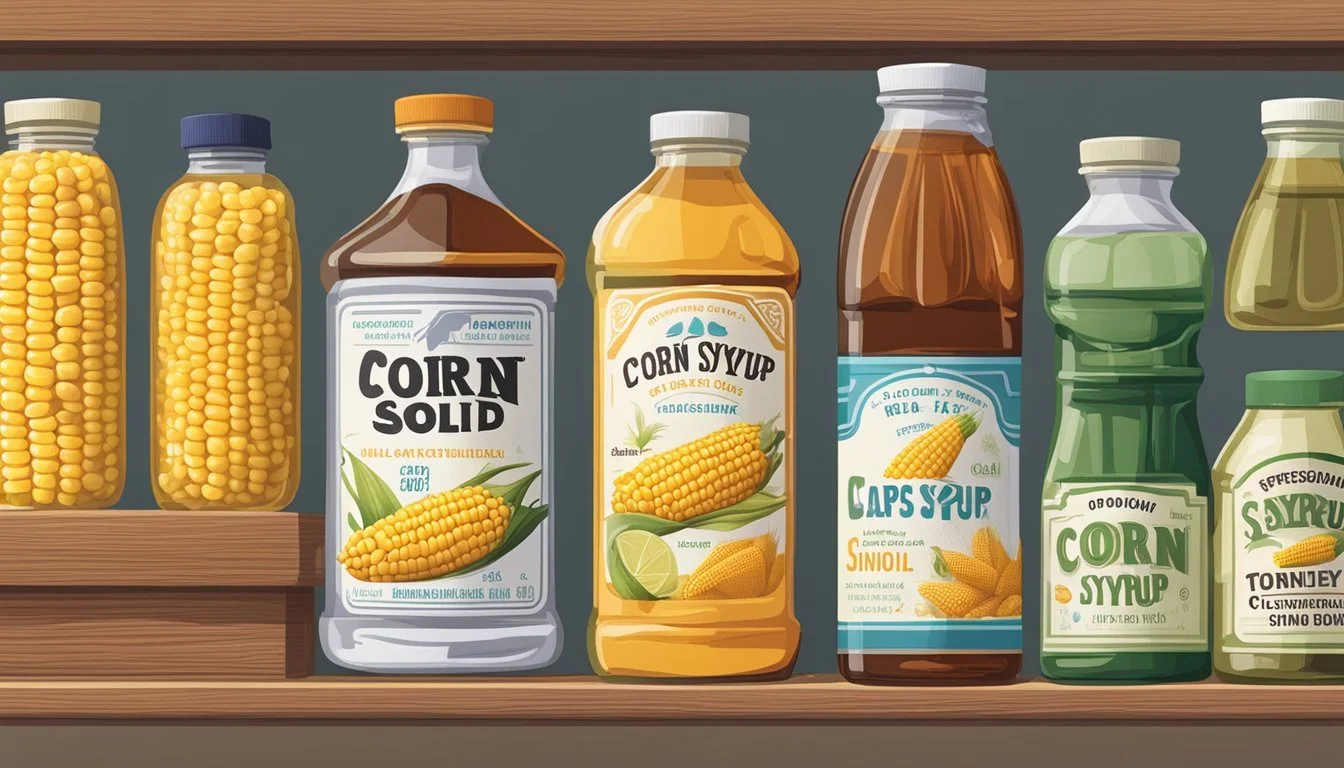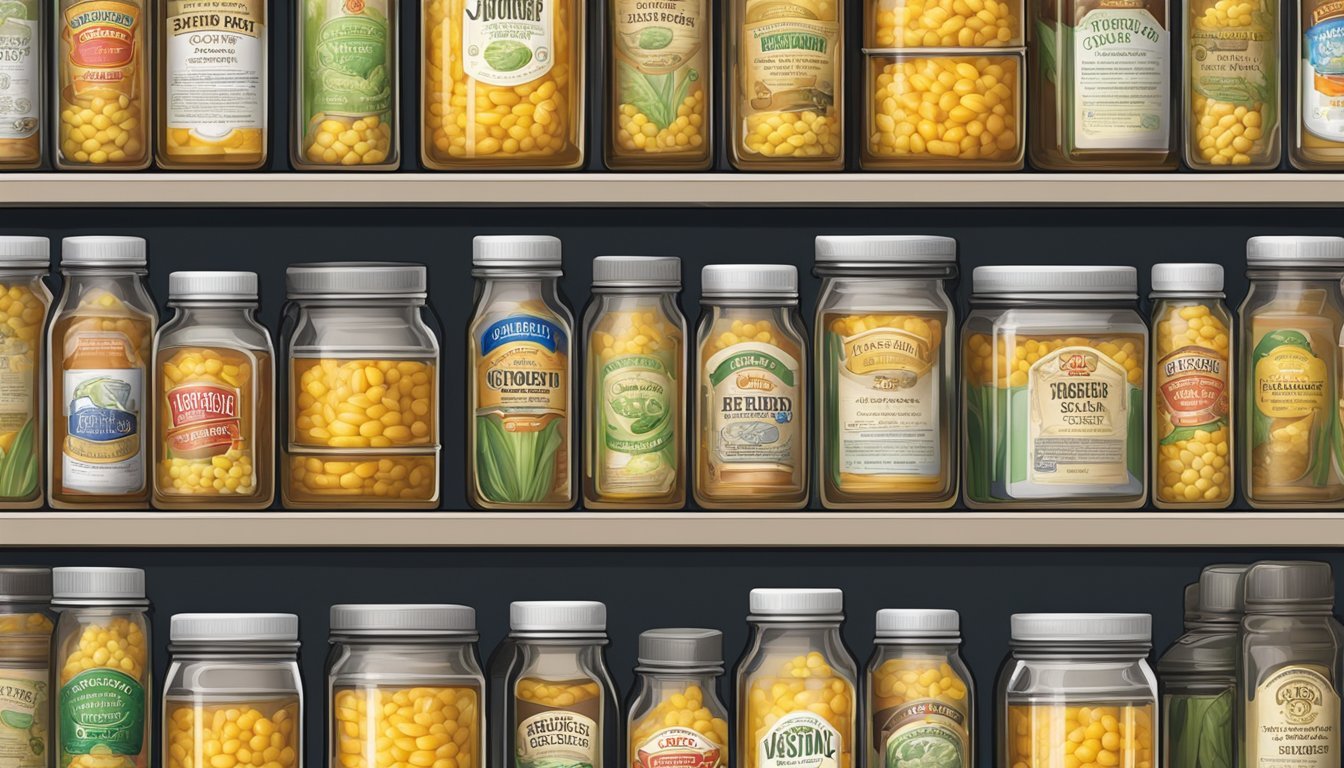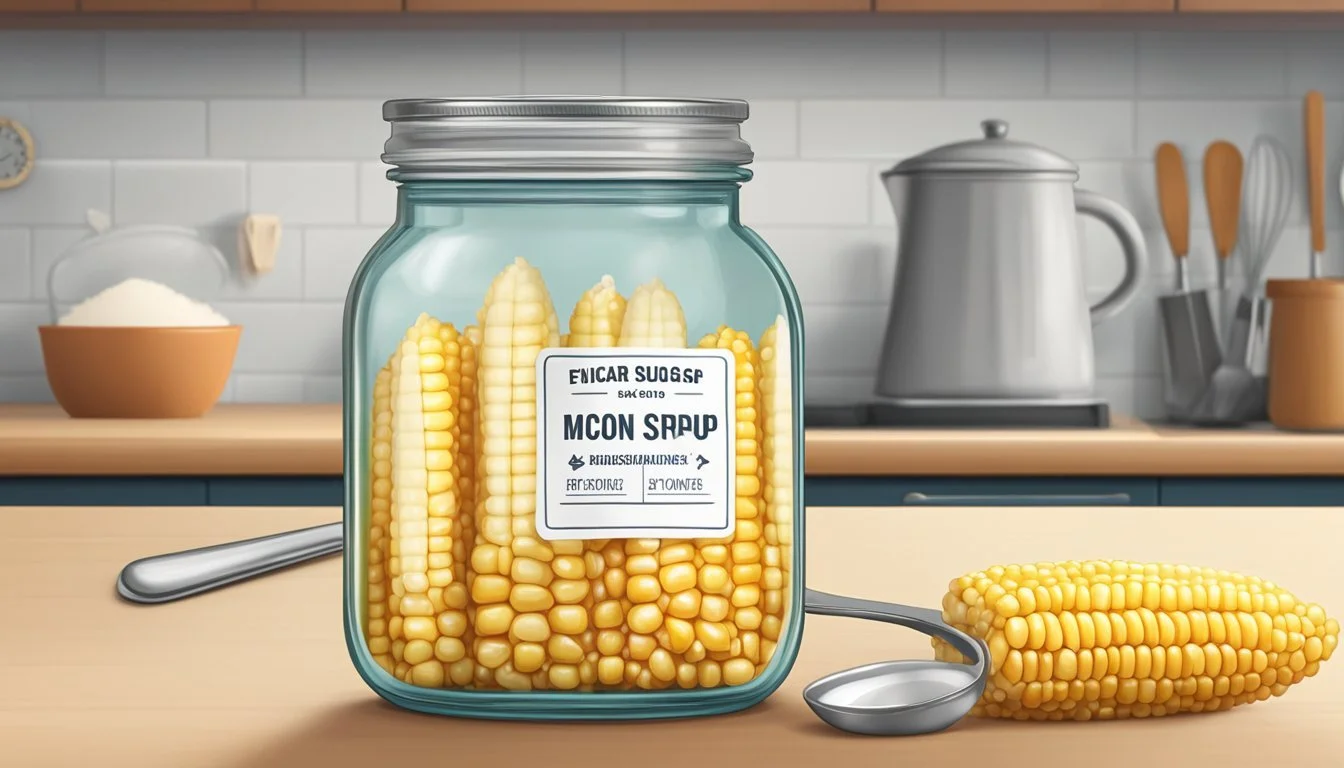Does Corn Syrup Solids Go Bad?
Shelf Life and Storage Tips
Corn syrup solids, a common sweetener, are often a staple in many pantries due to their versatile use in various culinary applications. While corn syrup solids have an indefinite shelf life, it’s essential to store them properly to maintain their quality. Exposure to high temperatures or contaminants can affect their color, flavor, and consistency over time.
When it comes to their usability, corn syrup solids remain safe to consume if stored in a cool, dry place. Even though they don't spoil easily, checking for any signs of mold or off odors is crucial to ensure they haven't degraded in quality. Their durability makes them an ideal ingredient for long-term storage without the worry of expiring quickly.
Understanding the storage conditions and signs of quality change can help ensure that the corn syrup solids remain in optimal condition. This makes them a reliable ingredient for anyone looking to maintain an efficient and long-lasting pantry.
Understanding Corn Syrup
Corn syrup is a common sweetener used in a variety of culinary applications. It is available in different forms, each with unique characteristics and purposes.
Types and Composition
Corn syrup comes in several types, including light corn syrup, dark corn syrup, and high-fructose corn syrup (HFCS). Light corn syrup is clear and has a mild sweetness, while dark corn syrup has a richer flavor due to the addition of molasses.
HFCS is produced by converting glucose into fructose, making it much sweeter. Corn syrup, in general, is composed primarily of glucose, making it less sweet compared to sucrose or HFCS.
Culinary Applications
Corn syrup is widely used in baking and candy making due to its ability to prevent sugar crystallization. Light corn syrup is preferred for adding sweetness without altering the color of dishes, ideal for baked goods.
Dark corn syrup, with its robust flavor, is often used in recipes requiring a deeper taste, such as pecan pie. HFCS, with its high sweetness, is typically used in commercial food production for beverages and processed foods.
Corn Syrup vs. Other Sweeteners
When comparing corn syrup to other sweeteners such as sugar, maple syrup, molasses, honey, and agave nectar, each has distinct properties. Sugar is a straightforward sweetener, while maple syrup and molasses offer unique flavors.
Honey provides a natural taste and additional nutrients, whereas agave nectar is preferred for its low glycemic index. Corn syrup is chosen for its specific properties that are advantageous in cooking and baking, including its ability to maintain moisture and prevent crystallization.
Proper Storage of Corn Syrup
To ensure the best quality and longevity of corn syrup, it is crucial to follow proper storage guidelines. Key factors include keeping the syrup in a tightly sealed container and storing it in a cool, dry place away from direct sunlight.
Unopened vs. Opened Containers
Unopened corn syrup can last indefinitely when stored correctly. It should be kept in a cool, dry place, such as a kitchen cabinet, where temperatures are stable and away from moisture.
Opened containers, on the other hand, require more attention. Once the seal is broken, it is essential to keep the bottle tightly closed after each use. Light corn syrup is best used within two weeks, while dark corn syrup remains good for about a month. Properly sealing the container prevents contamination and exposure to air, which can lead to crystallization and degradation in quality.
Best Practices for Extending Shelf Life
To extend the shelf life of both opened and unopened corn syrup, keep it in a pantry or similar storage area that remains cool and dry. Avoid storing the syrup near heat sources, such as ovens or stovetops, which can affect its consistency and color over time.
Key tips for storage include:
Tightly sealed containers: Prevents moisture and microbial growth.
Cool, dry place: Helps maintain optimal quality.
Avoid refrigeration: This can cause crystallization, which is difficult to reverse.
Utilizing these best practices ensures that corn syrup remains safe and maintains its intended flavor and consistency for as long as possible.
Risks of Improper Storage
Improper storage of corn syrup can have several consequences. Exposure to moisture and heat can lead to crystallization, where the sugar content forms crystals, making the syrup difficult to use.
Leaving the container open or not tightly sealed invites harmful bacteria and microbial growth, leading to spoilage. Signs of spoilage include off odors, discoloration, and changes in consistency.
In some cases, improper storage can result in contamination, which compromises food safety. Therefore, adhering to proper storage guidelines is essential to avoid these risks and preserve the quality of corn syrup over time.
Identifying Signs of Spoilage
Corn syrup solids, like many food products, can show signs of spoilage over time. It is crucial to know how to detect when they have gone bad to ensure safety and flavor quality.
Changes in Flavor, Color, and Smell
Corn syrup solids should retain a mild, sweet flavor and a clear, consistent appearance. If the product starts to taste different, it may indicate spoilage. A sour or otherwise off-tasting syrup suggests it is no longer safe to consume.
Color changes, such as cloudiness or a dark tint, also signal deterioration. The syrup should be clear; any clouding can be a sign of bacterial growth.
Smell is another strong indicator. Fresh corn syrup solids have a subtle, sweet aroma. An off odor, whether sour or foul, indicates that it’s safer to discard the product.
Texture and Consistency Alterations
Texture plays a crucial role in identifying spoilage. Corn syrup solids should have a uniform, flowing consistency. If the texture alters, becoming thicker or more viscous than usual, this change likely points to spoilage.
Additionally, the development of a gritty or lumpy texture is another warning sign. Texture changes can happen due to prolonged storage or improper sealing of the container, affecting the consistency of the syrup. Fluctuations from its normal smooth state are a clear sign of spoilage.
Presence of Mold and Fermentation
Mold growth is a definite indicator of spoilage. Check the surface of the corn syrup solids for any visible molds, which can appear in various colors. The presence of mold is a clear sign that the product is no longer safe to consume.
Fermentation signs, such as bubbles or a fizzy feeling, suggest contamination and spoilage. Fermentation typically occurs due to bacterial activity, which compromises both the safety and quality of the syrup. These phenomena are strong indicators of bacterial growth and an off odor.
Identifying these signs early can prevent consumption of spoiled corn syrup solids, ensuring both safety and quality.
Shelf Life Expectancy
Corn syrup solids have a notable shelf life expectancy due to their high sugar content, which acts as a preservative. The shelf life can be influenced by several factors, including storage conditions and the integrity of the packaging.
Indicators of Shelf Life Duration
The shelf life of corn syrup solids primarily depends on factors such as color, texture, and odor. Fresh corn syrup solids should have a consistent color and smooth texture. Over time, changes like darkening in color or lump formations might be observed. An off or unpleasant odor indicates that the product may have deteriorated and is unsafe to consume. Visual and olfactory inspection are critical for determining the product's suitability for use.
Factors Influencing Shelf Life
Storage conditions play a key role in the longevity of corn syrup solids. They should be kept in a cool, dry place away from direct sunlight and heat. Exposure to moisture or humidity can significantly reduce their shelf life. Tightly sealing the packaging after each use is essential to prevent contamination and moisture ingress. Containers that are not adequately air-tight will allow the product to degrade faster, leading to quality loss.
Is Expired Corn Syrup Safe to Consume?
Despite their high sugar content, which can inhibit microbial growth, expired corn syrup solids might not retain their best quality. Products are typically labeled with a best-by date rather than a strict expiration date. If stored properly, they can be safe to consume past their best-by date, although their flavor, color, and consistency may degrade. It is advisable to rely on sensory cues like taste and smell to evaluate safety and quality.
Alternatives and Substitutes
Discovering substitutes for corn syrup solids can be essential for various culinary applications. This guide explores when to consider alternatives and how common substitutes perform in different contexts.
When to Consider an Alternative
Considering alternatives to corn syrup solids may arise from dietary needs or recipe requirements. Individuals on a gluten-free diet or those reducing sugar content might seek substitutes.
Different sweeteners, such as honey, maple syrup, and agave nectar, provide varying benefits. Honey offers a similar sweetness but lacks the crystallization prevention needed for candy-making.
Maple syrup delivers a unique flavor and works well in baking. Agave nectar, known for its mild taste, suits desserts like pies but isn’t ideal for high-heat applications. Grape molasses and dry powdered milk can also aid in binding and fermenting processes.
How Substitutes Compare
Honey and maple syrup can replace corn syrup solids in a 1:1 ratio, adding distinctive flavors and a natural sweetness. The texture and consistency might change, though, as these substitutes don't prevent crystallization.
Agave nectar, with its balanced sweetness, serves well in most desserts but not in candy-making. Molasses enhances flavor complexity and sweetness but may alter a dish’s color and depth.
For baking, dry powdered milk can help with binding, while sugar replaces the sweetening function of corn syrup solids effectively. Each substitute offers unique benefits, making it crucial to choose based on specific recipe needs and desired outcomes.
Conclusion
Corn syrup solids have an extended shelf life if stored properly. They should be kept in a cool, dry place to maintain their quality. Exposure to moisture can cause clumping and spoilage.
The quality of corn syrup solids can gradually diminish. This mainly affects their flavor and texture, though they may remain safe to consume.
Concerns about the safety of corn syrup solids typically focus on their high glucose content. This can impact blood sugar levels and overall health if consumed excessively.
In summary, it is essential to store corn syrup solids correctly. Proper storage conditions can help preserve their quality and reduce the risk of spoilage.
Maintaining a balanced diet is crucial. Monitoring the intake of foods containing corn syrup solids can contribute to better health.







